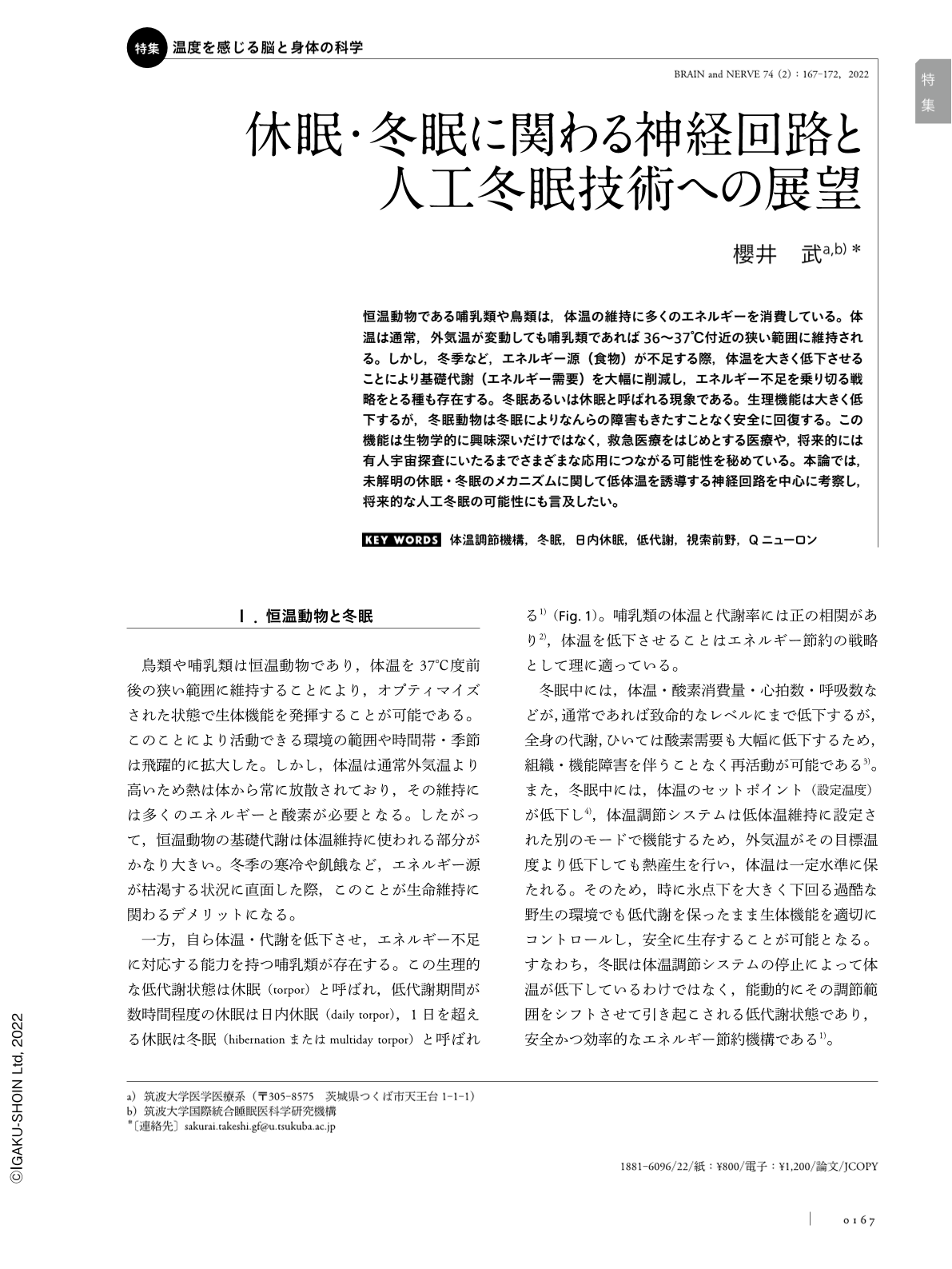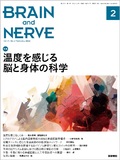Japanese
English
- 有料閲覧
- Abstract 文献概要
- 1ページ目 Look Inside
- 参考文献 Reference
恒温動物である哺乳類や鳥類は,体温の維持に多くのエネルギーを消費している。体温は通常,外気温が変動しても哺乳類であれば36〜37℃付近の狭い範囲に維持される。しかし,冬季など,エネルギー源(食物)が不足する際,体温を大きく低下させることにより基礎代謝(エネルギー需要)を大幅に削減し,エネルギー不足を乗り切る戦略をとる種も存在する。冬眠あるいは休眠と呼ばれる現象である。生理機能は大きく低下するが,冬眠動物は冬眠によりなんらの障害もきたすことなく安全に回復する。この機能は生物学的に興味深いだけではなく,救急医療をはじめとする医療や,将来的には有人宇宙探査にいたるまでさまざまな応用につながる可能性を秘めている。本論では,未解明の休眠・冬眠のメカニズムに関して低体温を誘導する神経回路を中心に考察し,将来的な人工冬眠の可能性にも言及したい。
Abstract
Mammals and birds are categorized as thermostatic animals and consume significant quantities of energy to maintain their body temperature. Body temperature in mammals is usually maintained within a narrow range of 36-37℃ despite fluctuations in the external temperature. However, during periods of food scarcity, which leads to a diminished source of energy, such as in winter, some species adopt a strategy to overcome the energy shortage by lowering their body temperature, which significantly reduces their basal metabolism (energy demand). This phenomenon is referred to as hibernation or torpor. Although physiological functions are greatly reduced, the animals can safely recover from prolonged periods of hibernation. This function is not only biologically interesting but also has potential applications in medicine, including in emergency medicine and in future human space exploration. In this paper, I have discussed the mechanisms underlying hibernation with regard to neural circuits that induce hypothermia, which currently remain unclear and the possibility of artificial hibernation in the future.

Copyright © 2022, Igaku-Shoin Ltd. All rights reserved.


